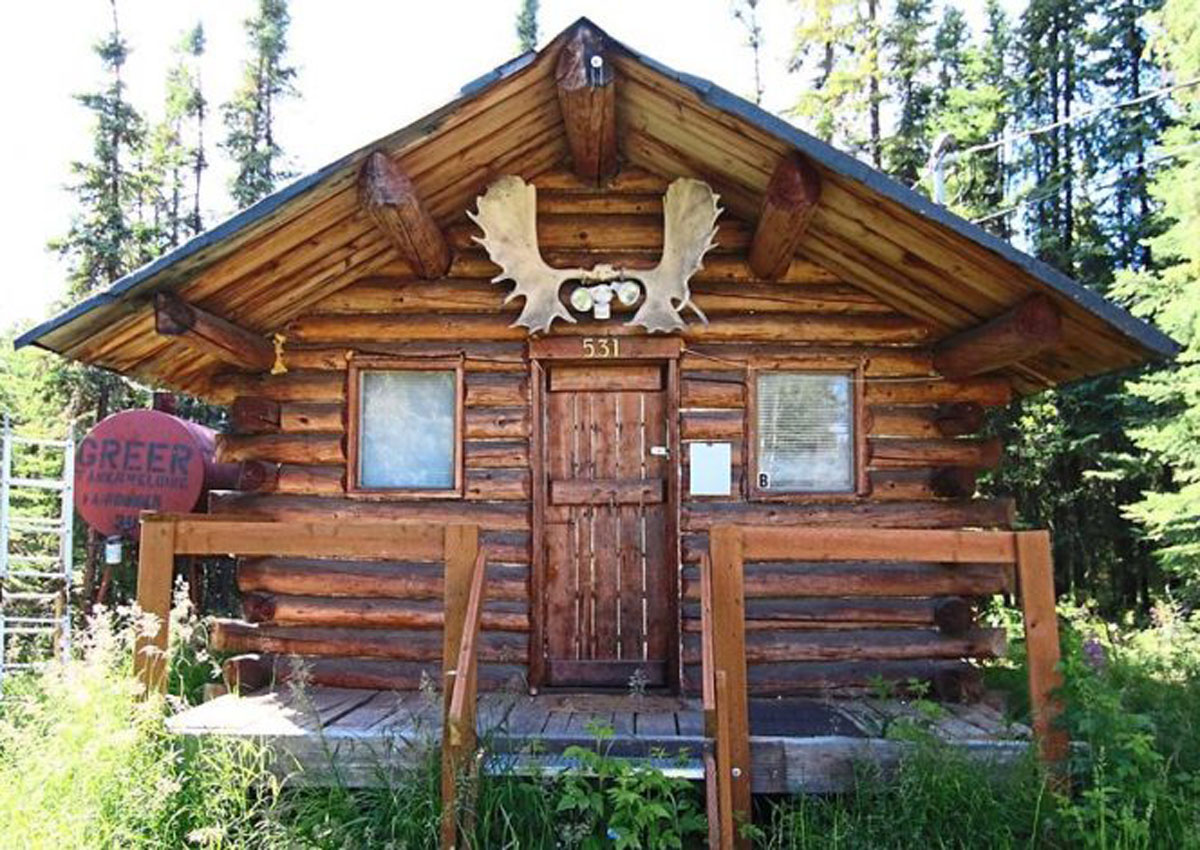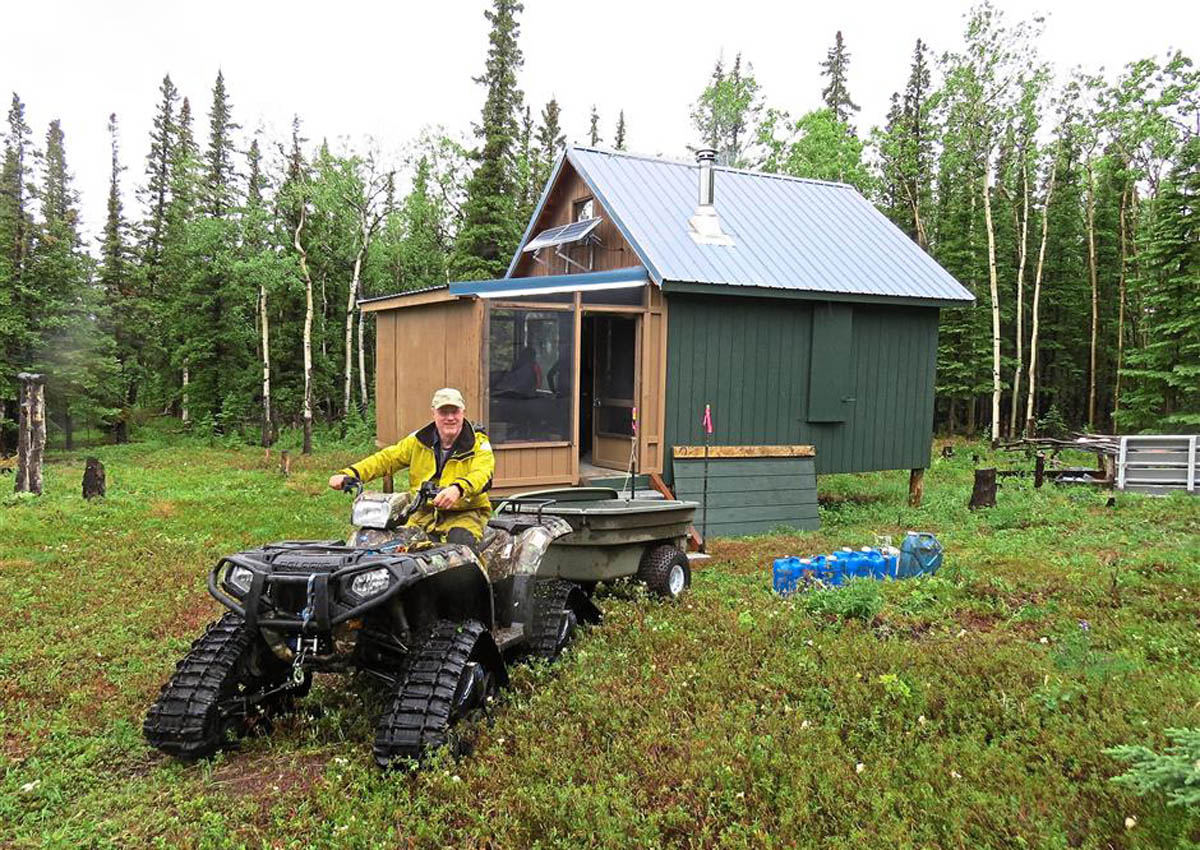Meet the landlord who built 18 cabins by himself from the ground up
Not everyone is willing to forego the comforts of home to seek adventure elsewhere. But Eric Muehling did just that. At 26, he packed his belongings into a car and spent the next few days driving to Alaska, which was largely underpopulated back in the 1980s.
He didn’t know anyone there and the Arctic climate with long, cold, harsh winters and short summers didn’t deter him either. A native of Cleveland, Ohio, the outdoor lover hungered for new adventures and opportunities. Perhaps Jack Kerouac’s masterpiece On The Road somewhat influenced him.
“Maybe a small part of me wanted to run away. And another part wanted to seek solace,” shares the 67-year-old in an e-mail interview. Muehling found a job as a photojournalist with Fairbanks Daily News-Miner and spent the next decade working for the newspaper.
While he was busy clicking away on his camera, he stumbled onto cabin building. Over the years, the hobby turned into a revenue generator in his retirement years. Muehling offers, “Every spring, I look forward to the summer, and wonder what I might do with all the warm weather and nearly 24 hours of daylight in Alaska.
“Jim, my first friend in Alaska, grew up on a 160-acre (65ha) homestead north of Fairbanks. When the rest of Jim’s family left Alaska and moved to warmer climates, Jim acquired the homestead, tore down the log home, and built a house on stilts. I helped him and that’s how I got drawn into it.
“I could see there was no mystery to carpentry. Measure, cut, sand, nail. Cuss when you make mistakes! Fix it. My confidence grew. Carpentry, it turns out, is very straightforward. And I love being outdoors.”
Interestingly, his cabin designs begin as a sketch on a napkin before they are detailed on graph paper. Over time, he acquired the tools and skills of a professional contractor. He says, “Good tools pay for themselves. Right-angle drill, sliding chop-saw, air-compressors to drive air hammers and staplers, specialised tools to cut metal roofing, install electrical wiring, and airless paint-sprayer.

“The other day, I counted eight ladders in my garage, three air-compressors, two electric generators, two welders, sanders and drills and two chainsaws. I have shelves of leftover nails, screws and other fasteners.” For someone who thrives on his passion, that is not a lot, though it fills up his garage.
“I am a self-taught heavy equipment operator. I rent backhoes and excavators to dig holes for outhouses and set foundations. I’ve rented bulldozers and loaders to build and repair roads and driveways and clear land. So, I guess I’m basically a contractor, but the difference is everything I build I keep and rent. Maybe that makes me a hobbyist-contractor. I don’t build for other people, only for myself. That has served me well as a real estate investor and builder.”
Building Dry Cabins
Cabin living is rustic but comfortable. It’s a simpler lifestyle with heat and electricity, but no running water. Muehling’s cabins sport different designs: two-bedrooms, one-bedroom, and one room with a loft. Each time a cabin goes on the market, he watches closely to see who is interested, and why.
“Some young couples want to nest and try cohabitation. Some people want privacy. Others share a cabin to split rent and utilities. So, my cabins were built in several configurations that serve all these needs. Graduate students may live alone in a two-bedroom cabin and use the second room as an office.
“I don’t concern myself with anyone’s lifestyle. What matters is that a renter takes care of my cabin, returns it in about the same condition, pays rent on time, and doesn’t bother anyone else. What goes on inside the cabin is rarely my business.
“In short, it’s not only the cabins, it’s also the landlord. I get to know tenants and consider many as friends… except for that tenant who shot a hole in the ceiling and floor, and ended up in jail. But that’s another story,” he says.

Today, Muehling is a proud landlord with 18 “dry” cabins he built from scratch (OK, with help from one other person, he admits). From the drawing on a scanty piece of napkin to its materialisation, a cabin takes three to four months to complete.
A dry cabin has no running water. Since most of Muehling’s tenants are university students, they shower at the gymnasium and haul water in five-gallon jugs for cooking, brushing teeth, and hand-washing.
“I’ve usually been able to find a friend who needs a little extra cash. Almost any cabin can be built by two people. I’m a hard worker and have been told I’m a demanding and controlling boss. In the past, I’ve thought more about ‘time is money’ rather than ‘hey, be good to your helpful friend’.
I’m much more relaxed now, less focused on production. I try to remember the process is more important than the finished cabin. Like the cabins I build, I’m a work in progress,” says Muehling.
All his cabins come with clean outhouses or indoor composting toilets. There is a community garden area that tenants share. Muehling’s cabins are also near to trails for winter skiing and hiking.
While building may be his passion, costing is not. He reveals, “I make a cost estimate from the materials list. Cabins usually cost 25 per cent more than my estimate because I tend to forget about wasted material, fasteners, hardware, roofing, windows, etc. I’ve never been able to accurately estimate a project, as hard as I try.”
The cabins are located within 5km of the University of Alaska Fairbanks, with cabins having a short driving path to their front door. While it is still in a civilised area, imagine waking up to see an owl, a moose, a porcupine or other wildlife peeking through your window. Nothing beats the “forest” feel.
Aches, Cuts And Bruises
Since the job requires a lot of manual labour, Muehling has had his share of challenges and mishaps. He recalls, “I’ve hit my thumb with a hammer more times than I can remember, cut my leg with a chainsaw while clearing land and have had numerous knife cuts. A nail flung up and struck me in the forehead once when it resisted icy frozen wood. I wear out clothing faster than most people, so I buy used work clothing.
“Sometimes a summer project isn’t completed by winter. Progress is slow in the cold and dark. My fingers get numb from the extreme cold, making it hard to handle small objects like nails, screws and tools. If I take the gloves off to handle a nail or screw, I have maybe 30 seconds where I can feel the nail between my fingers. As cold soaks deep into my fingers, they become numb. To warm up, I stuff my hands deep into my pants at the crotch…” he trails off.
Muehling reckons there are several other landlords in Fairbanks with rental cabins, but most do it as a business and not for the joy of building. “Building is a great excuse for being outdoors in Alaska. I enjoy working with my hands and using my mind in creative ways. I enjoy solving problems that come up during the course of construction. I like contributing affordable housing to the community. I like that my housing is energy-efficient.”
Because Muehling always held a full-time job as a web designer, computer programmer or multimedia app developer, finding time to build was the greatest challenge. He’d come home from work, eat dinner, then go build in the evenings. His wife saw very little of him.
But that’s all in the past as the semi-retired bloke can sit back to enjoy the fruits of his hobby. “One day a curious bear stopped by to watch me work. Moose hang out with me. Curious foxes check me out. Hawks and geese and owls fly overhead. It’s magical.
“I say never slow down until you must. Be active. Once you stop, it’s hard to restart. Hard work keeps you young or it kills you. I don’t know how long this active lifestyle will last. I’ve had back surgery – and my backaches are probably due to the hard work. But when I’m active, it hurts less, so I stay active,” he concludes.
Eventually, there will come a day when he has to sell the cabins, and become a “snowbird” that leaves Alaska during the coldest winter months for a warmer climate. Till then, Muehling will continue to use those handy napkins to live out his dream.
Published at Fri, 27 Oct 2017 01:35:15 +0000

